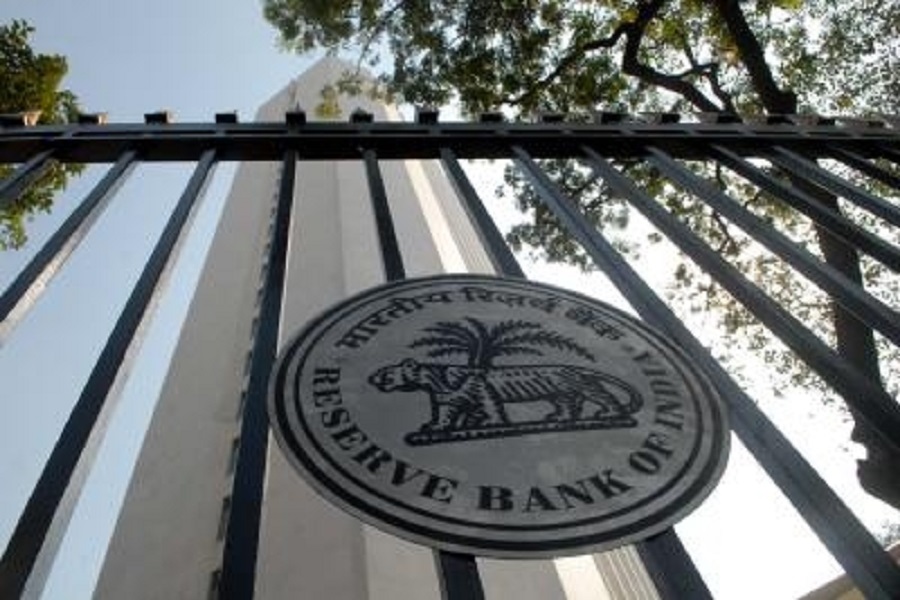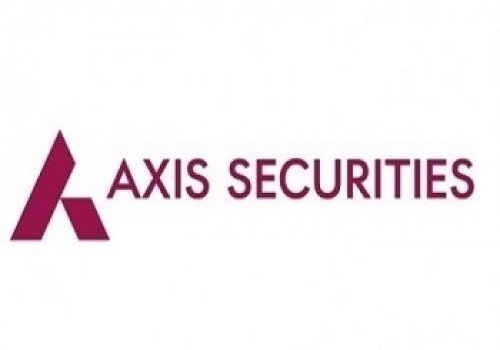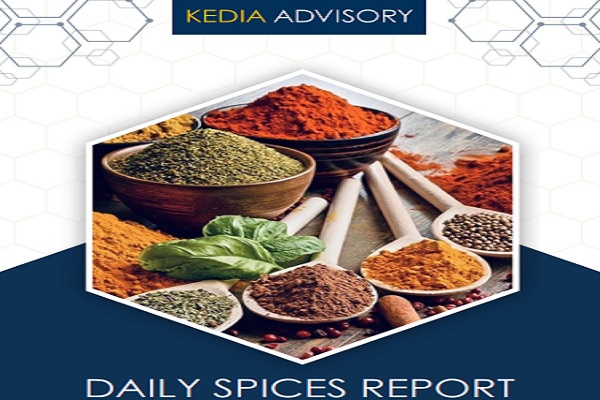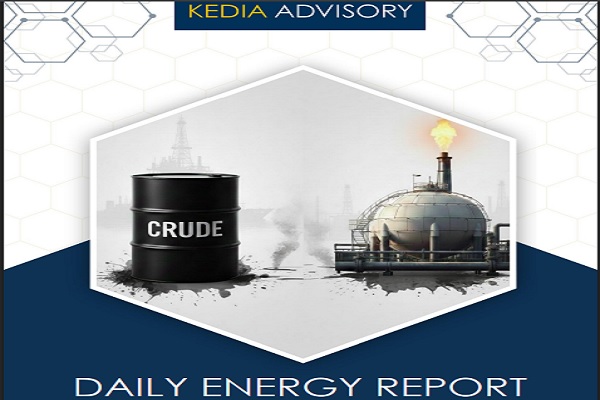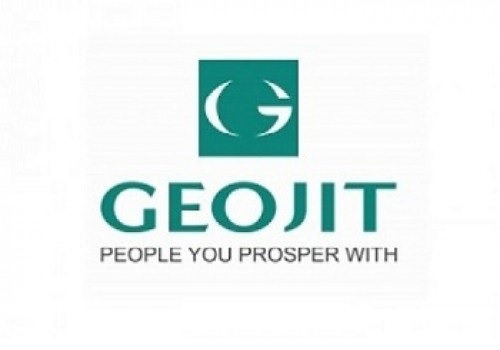Turmeric trading range for the day is 13660-15416 - Kedia Advisory

Gold
Gold prices declined by 0.53% to settle at Rs 93,252 amid improved global risk appetite after the White House excluded smartphones and computers from reciprocal tariffs on China. The easing trade tension temporarily dented safe-haven demand. However, market sentiment remained cautious, with U.S. President Donald Trump indicating upcoming tariffs on imported semiconductors, keeping geopolitical uncertainty elevated. Despite the pullback, long-term fundamentals remain supportive. Goldman Sachs raised its year-end gold forecast to $3,700, citing stronger-than-expected central bank demand and increased recession risks fueling ETF inflows. China led investment activity, with inflows into physically backed gold ETFs reaching 29.1 metric tons in just the first 11 days of April—surpassing total inflows for Q1 and outpacing U.S.-listed funds. Physical gold demand also improved in major Asian hubs due to recent price corrections. Chinese dealers offered premiums ranging from $24 to $54 per ounce over global benchmarks, compared to $6–$13 the previous week. The People's Bank of China added gold to its reserves for the fifth consecutive month in March. Indian gold dealers, however, shifted from premiums of $5 early in the week to discounts as deep as $33 per ounce later, reflecting subdued retail interest amid high prices. Gold is witnessing long liquidation, with open interest declining by 0.12% to 20,408. Key support lies at Rs 92,810 and Rs 92,365, while resistance is placed at Rs 93,640 and Rs 94,025. A breakout above these levels may determine the next directional move.
Trading Ideas:
* Gold trading range for the day is 92365-94025.
* Gold prices fell as risk appetite improved after tariff exemptions on electronics were announced.
* Washington's exclusion of smartphones and computers boosted overall risk sentiment in financial markets.
* Goldman Sachs raises end-2025 gold price forecast to $3,700/oz
Silver
Silver settled higher by 0.62% at Rs 94,870 amid easing trade tensions following U.S. President Donald Trump's decision to exempt key tech products from the newly imposed 145% reciprocal tariffs. This move lifted global market sentiment and led China’s Commerce Ministry to label it a “small step,” though it continued to urge the U.S. for broader tariff relief. The market's focus has now shifted to upcoming trade talks between the U.S. and key partners like Japan, India, and South Korea. Prior to this pullback, silver prices had surged over 8% in three sessions, driven by heightened geopolitical uncertainty and weak U.S. economic data, which strengthened expectations for further Fed rate cuts. These macro concerns, combined with structural supply-demand dynamics, continue to support silver’s bullish tone. Fundamentally, silver is projected to witness its fifth consecutive annual deficit in 2025, with a shortfall of 149 million ounces despite the deficit shrinking 19% from the previous year. Total demand remains stable at 1.20 billion ounces, led by industrial fabrication, expected to hit a record high of 700 Moz. Silver physical investment is forecast to grow by 3%, especially in Europe and North America. On the supply side, total output is expected to rise 3% to 1.05 billion ounces, driven by increased mining and recycling activities. Technically, silver is in short covering mode, with open interest falling 2.42% to 16,743 as prices rose Rs 584. Immediate support lies at Rs 93,870, followed by Rs 92,870. Resistance is seen at Rs 95,575, above which prices could test Rs 96,280. The trend remains cautiously optimistic.
Trading Ideas:
* Silver trading range for the day is 92870-96280.
* Silver prices gained as some support seen after easing trade tensions.
* Trump's tariff exemptions for tech products improved global market sentiment significantly.
* China's Commerce Ministry called for full removal of the 145% levy on goods.
Crude oil
Crude oil prices fell by 0.72% to Rs 5,264 amid renewed demand-side concerns after OPEC revised down its global oil demand growth forecast for 2025 and 2026 by 150,000 barrels per day (bpd) each. OPEC now expects 2025 demand growth at 1.30 million bpd, and 1.28 million bpd for 2026. The downgrade is based on weaker-than-expected Q1 data and the impact of fresh U.S. trade tariffs. Additionally, OPEC cut its global economic growth forecast to 3.0% for 2024 from 3.1%, and to 3.1% for 2025 from 3.2%, signaling caution over the broader macroeconomic environment. On the supply side, China's crude imports surged nearly 5% YoY in March to 12.1 million bpd—the highest since August 2023—fueled by Iranian and Russian oil flows. However, Kazakhstan’s output in early April remained above its OPEC+ quota, raising friction within the alliance. Meanwhile, U.S. crude inventories rose by 2.553 million barrels, above forecasts, with Cushing stocks also up 681,000 barrels. In contrast, gasoline and distillate inventories declined by 1.6 million and 3.544 million barrels respectively. The IEA also trimmed its 2025 oil demand growth forecast by 70,000 bpd, warning of a potential 600,000 bpd supply surplus this year, which could expand to 1 million bpd if OPEC+ fails to curb output. Technically, crude is under long liquidation as open interest plunged 28.11% to 8,554. Support lies at Rs 5,203, with deeper downside potential to Rs 5,143, while resistance is at ?5,350 and ?5,437.
Trading Ideas:
* Crudeoil trading range for the day is 5143-5437.
* Crude oil prices fell as OPEC cut 2025 global oil demand growth forecast for first time.
* OPEC forecasts world oil demand growth of 1.30 million bpd in 2025, down 150,000 bpd.
* China's crude oil imports surged nearly 5% in March, highest since August 2023.
Natural Gas
Natural Gas prices fell sharply by 3.84% to settle at Rs 292.7, driven by rising U.S. production levels and milder weather conditions, which are expected to persist through April 29, curbing heating demand. The average gas output in the Lower 48 states hit 106.3 billion cubic feet per day (bcfd) so far in April, slightly above the March record of 106.2 bcfd. Over the weekend, daily production reached an all-time high of 107.4 bcfd, reinforcing oversupply concerns. Meanwhile, LNG exports provided some support, with flows to U.S. LNG export terminals reaching a record 16.3 bcfd in April. The increase was primarily led by higher volumes from Venture Global’s new Plaquemines facility in Louisiana. On the storage front, U.S. utilities injected 57 billion cubic feet (bcf) into storage for the week ending April 4, slightly below market expectations of a 60 bcf build. This was still significantly higher than both last year's 16 bcf build and the five-year average of 17 bcf, indicating ongoing inventory replenishment. However, current storage remains 19.7% below last year and 2.1% under the five-year average. According to the EIA, natural gas production and consumption in the U.S. are expected to reach record highs in 2025. Dry gas output is projected to rise to 104.6 bcfd, while consumption is forecast at 90.7 bcfd. LNG exports are also set to rise to 14.0 bcfd. Fresh selling was observed, with open interest surging by 43.92% to 20,002. Support lies at Rs 285.9 and Rs 279, while resistance is seen at Rs 305.4 and Rs 318.
Trading Ideas:
* Naturalgas trading range for the day is 279-318.
* Natural gas fell due to rising production and mild weather forecasts.
* Average gas output in the Lower 48 US states rose to 106.3 billion cubic feet per day so far in April.
* Also, warmer-than-usual temperatures are expected to persist through April 29, reducing heating demand.
Copper
Copper prices rose by 0.85% to Rs 847.05, supported by easing trade tensions after U.S. President Donald Trump announced exemptions for key tech products from newly imposed 145% “reciprocal” tariffs. This move boosted global investor sentiment and supported risk assets, including industrial metals. China termed the exemption a “small step” but continues to push for full removal of the broader tariff regime. Meanwhile, the market is closely watching upcoming U.S. trade negotiations with Japan, India, and South Korea. Further aiding copper’s rally were growing expectations that the U.S. could still impose metal-specific tariffs on national security grounds, prompting a wider premium in U.S. copper futures versus LME prices. This reflects concerns over limited U.S. copper smelting capacity and potential disruptions in trade flows. On the supply-demand front, the global refined copper market posted a deficit of 19,000 metric tons in January, compared to a 22,000-ton deficit in December, as per ICSG data. When accounting for bonded warehouse stock changes in China, the adjusted deficit stood at 17,000 tons in January. Meanwhile, China’s March imports of unwrought copper fell 1.4% YoY to 467,000 tons, with Q1 2025 imports down 5.2% YoY. However, copper concentrate imports rose 2.6% to 2.39 million tons. Technically, copper is witnessing fresh buying as open interest increased by 1.72% to 4,962. Immediate support lies at Rs 842.6, with next support at Rs 838. Resistance is seen at Rs 850.1, above which prices may test Rs 853.
Trading Ideas:
* Copper trading range for the day is 838-853.
* Copper prices rose as investor sentiment improved after Trump's tariff exemptions announcement.
* Deliverable copper stocks on SHFE stood at 235,296 tons, a 12% decrease from the 268,337 tons recorded in February.
* China's imports of unwrought copper and copper products in March declined 1.4% from a year earlier to 467,000 metric tons.
Zinc
Zinc prices declined by 0.86% to settle at Rs 252.4 amid rising concerns over demand due to escalating trade tensions between the U.S. and China. Although President Donald Trump announced a 90-day pause on tariffs for most countries, he raised duties on Chinese imports to 125% from the previous 104%, pressuring sentiment across base metals. Additional downside came from weak Chinese economic data—consumer prices fell for the second consecutive month in March, while factory-gate deflation deepened. Citi Research downgraded its 2025 zinc price forecast to $2,630/tonne from $2,750, citing immediate headwinds from U.S. tariffs. The global zinc market deficit narrowed to 10,000 metric tons in January from 41,100 tons in December, as per ILZSG data. In 2024, the global zinc market swung into a deficit of 62,000 metric tons from a surplus of 310,000 tons the previous year, driven by declining output. China’s refined zinc production declined by 8% month-on-month and over 4% year-on-year in February, but March output is expected to increase over 13% MoM and nearly 4% YoY due to extended production days and post-holiday recovery. Meanwhile, Australia’s Nyrstar announced a 25% production cut at its Hobart facility, and Alaska’s Red Dog Mine is expected to slow operations in 2025, tightening future global supply. The market witnessed fresh selling, with open interest rising by 2.63% to 2,658. Zinc finds support at Rs 251 and Rs 249.4, while resistance is placed at Rs 254.3 and Rs 256.
Trading Ideas:
* Zinc trading range for the day is 249.4-256.
* Zinc dropped amid risks for demand due to trade conflict between the U.S. and top metals consumer China.
* LME data showed zinc stocks fell by 1,350 tons, or 1.10%, to 121,800 tons.
* Data provided further evidence of a shaky Chinese economy, as consumer prices fell for the second straight month
Aluminium
Aluminium prices declined by 0.72% to Rs 234.3, pressured by a downward revision in global growth forecasts from Goldman Sachs, which now expects aluminium prices to average $2,000 per metric ton in Q3 2025. This comes in the wake of sharply increased tariffs imposed by the Trump administration, which has heightened concerns over global trade and economic activity. The bank’s revised outlook reflects slower expected demand from key economies like the U.S. and China. On the supply side, global primary aluminium output in February fell 0.9% YoY to 5.645 million tonnes, according to the International Aluminium Institute (IAI). However, aluminium output in China hit a record 44 million tonnes in 2024. Despite Beijing's production cap of 45 million tonnes, aluminium production in Jan-Feb 2025 rose 2.6% YoY to 7.32 million tonnes. The increase is largely due to improved smelter profitability, driven by easing alumina supply constraints and falling raw material costs. Meanwhile, China’s exports of unwrought aluminium and aluminium products reached 5.5 million tonnes in the first ten months of the year, marking a 17% YoY increase. However, JP Morgan anticipates a potential global market deficit of over 600,000 tonnes by 2025 due to limited supply growth and regulatory constraints in China. Technically, aluminium is under long liquidation with open interest down 1.92% to 3,623. Support is seen at Rs 233.6, with deeper support at Rs 232.7. Resistance is likely at Rs 235.9, and a move above could push prices toward Rs 237.3.
Trading Ideas:
* Aluminium trading range for the day is 232.7-237.3.
* Aluminium dropped as Goldman Sachs reduced its forecast for aluminium prices this year.
* Goldman also forecast a global aluminium market surplus of 580,000 tons in 2025, versus its previous forecast of a 76,000 tons deficit.
* The premium for aluminium shipments to Japanese buyers for April to June was set at $182 a metric ton, down 20% from the current quarter.
Turmeric
Turmeric prices surged by 3.06% to settle at Rs 14,554, supported by lower-than-expected arrivals and robust buying interest amid strong export trends. The limited supply situation due to smaller new crop arrivals has buoyed market sentiment, especially with the new crop yields anticipated to be 10–15% lower this year. Regions like Nanded are particularly impacted by small rhizomes and crop rot, which have contributed to concerns over declining productivity, despite an increase in sowing area. Although the area under turmeric cultivation has expanded by 10% to 3.30 lakh hectares this season from around 3 lakh hectares last year, production gains remain elusive. Unseasonal rains have affected rhizome development and overall yield potential, with industry estimates indicating a possible drop in productivity. As a result, total output may remain flat or fluctuate slightly compared to last year’s 10.75 lakh tonnes. Exports continue to paint a positive picture. During April–January 2025, turmeric exports jumped 12.93% year-on-year to 1.49 lakh tonnes, surpassing 2020 levels and reaching a four-year high. However, January 2025 exports declined by 23.17% from December but remained up 12.18% over January 2024. On the technical front, the market witnessed fresh buying interest with a 14.17% jump in open interest, settling at 13,055. Prices rose Rs 432. Support is now seen at Rs 14,108, with a breakdown possibly pushing prices to Rs 13,660. On the upside, resistance is at Rs 14,986, and a breach could lead to a test of Rs 15,416.
Trading Ideas:
* Turmeric trading range for the day is 13660-15416.
* Turmeric prices gained as lower-than-expected arrivals restricted supplies.
* Exports continued to pick up in the second half of 2024, with shipments reaching a four-year high.
* New crop yields are expected to be 10-15% lower this year, with the Nanded region particularly affected.
* In Nizamabad, a major spot market, the price ended at 14501.75 Rupees gained by 2.22 percent.
Jeera
Jeera prices edged up by 0.45% to settle at Rs 24,400, supported by steady domestic demand and continued export interest from Gulf countries. The upward movement in prices is also underpinned by tight near-term supplies, particularly due to limited arrivals from Rajasthan. Additionally, the new crop arrival from Gujarat has been delayed by nearly a month because of adverse weather, further restricting availability in the market. Despite the supply-side constraints, upside potential remains capped due to sluggish demand and sufficient available stocks. Farmers are reportedly holding around 20 lakh bags of cumin, with only 3–4 lakh bags expected to be traded before the end of the season, leaving a significant carry-forward stock of about 16 lakh bags. This could keep a lid on price rallies in the near term. Nevertheless, the overall cumin production for the 2023–24 season has improved significantly, rising to 8.6 lakh tonnes from 5.77 lakh tonnes a year earlier, thanks to better sowing conditions and increased acreage. On the export front, jeera shipments from April to January 2025 surged by nearly 67% year-on-year to 1.82 lakh tonnes. Despite a slight month-on-month dip in January, exports were still up 37.82% compared to the same month last year. Technically, the market witnessed fresh buying with a 0.3% increase in open interest to 5,973. Jeera is getting support at Rs 24,050, with further downside potential towards Rs 23,690. Resistance is seen at Rs 24,730, and a break above could push prices to Rs 25,050.
Trading Ideas:
* Jeera trading range for the day is 23690-25050.
* Jeera prices gained amid price support from domestic demand, as well as export activity.
* The current season is expected to have similar production levels as last year due to better crop conditions and good sowing.
* Jeera exports during Apr - Dec 2024, rose by 70.72 percent at 165,084.40 tonnes as compared to 96,701.43 tonnes exported during Apr- Dec 2023.
* In Unjha, a major spot market, the price ended at 24338.85 Rupees gained by 0.66 percent.
Views express by all participants are for information & academic purpose only. Kindly read disclaimer before referring below views

_Securities_(600x400).jpg)

.jpg)

.jpg)
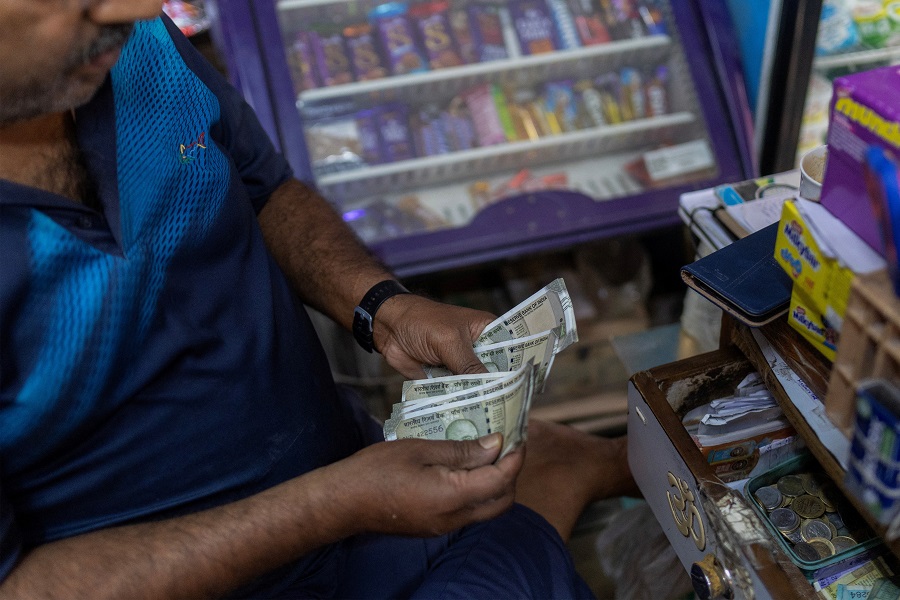
.jpg)
.jpg)







